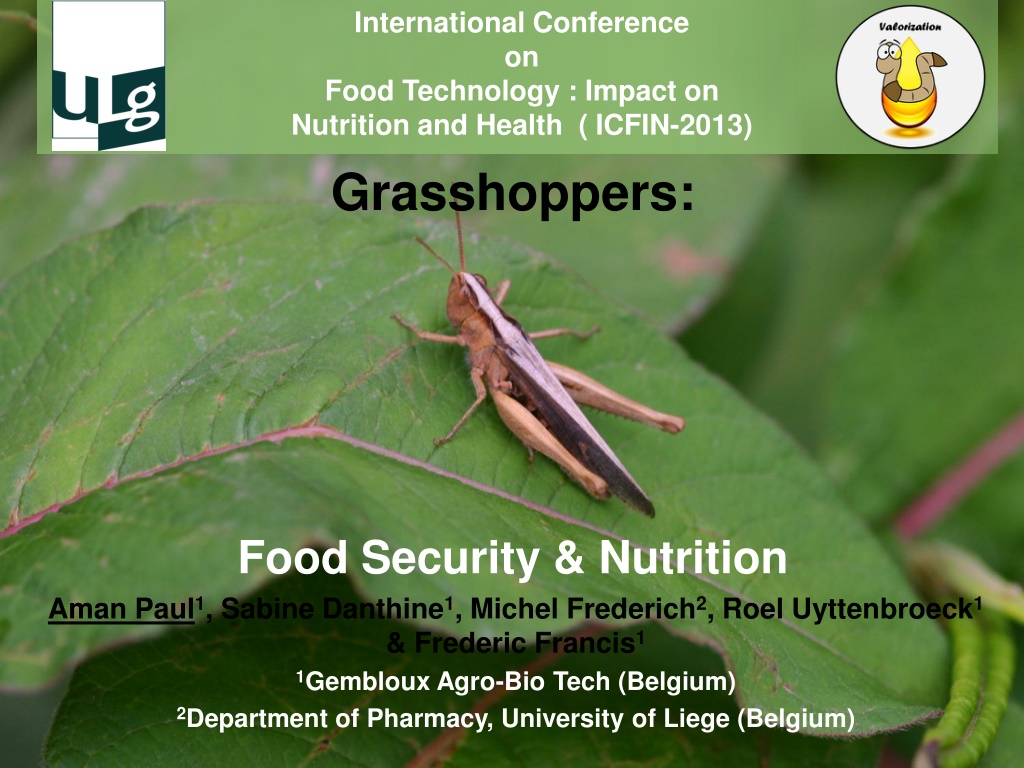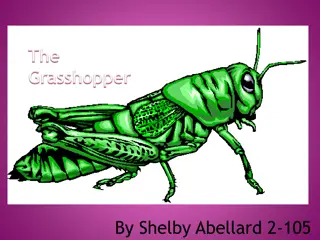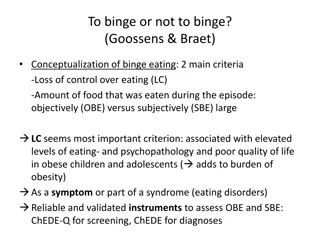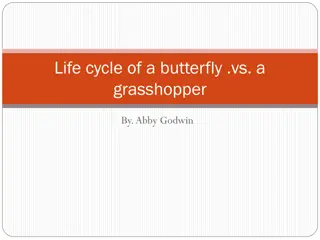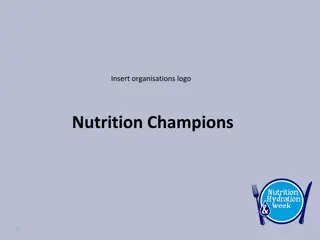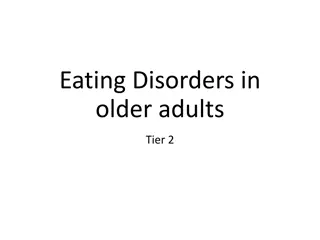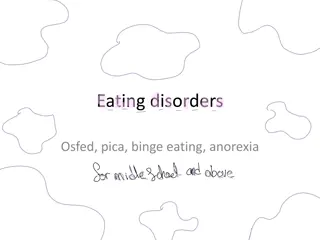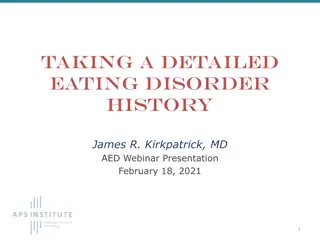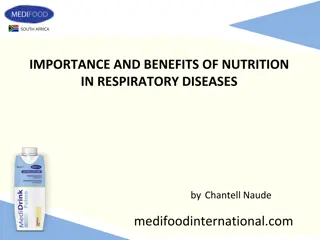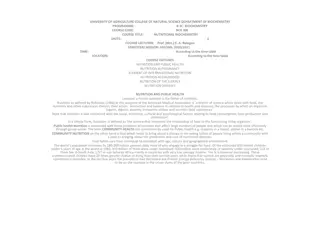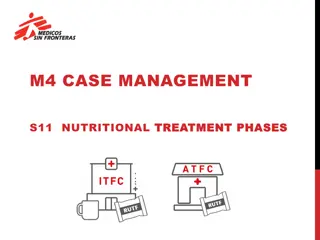Entomophagy and the Nutritional Benefits of Eating Grasshoppers
The International Conference on Food Technology delved into the practice of entomophagy, focusing on the consumption of grasshoppers. With over 80 edible species of grasshoppers globally, they provide essential nutrients such as proteins, fats, vitamins, and minerals. Grasshoppers are known for their high protein content, serving as a rich source of essential amino acids. Additionally, they offer fats, PUFA, magnesium, zinc, and key vitamins like tocopherol, riboflavin, and folic acid.
Download Presentation

Please find below an Image/Link to download the presentation.
The content on the website is provided AS IS for your information and personal use only. It may not be sold, licensed, or shared on other websites without obtaining consent from the author. Download presentation by click this link. If you encounter any issues during the download, it is possible that the publisher has removed the file from their server.
E N D
Presentation Transcript
International Conference on Food Technology : Impact on Nutrition and Health ( ICFIN-2013) Grasshoppers: Food Security & Nutrition Aman Paul1, Sabine Danthine1, Michel Frederich2, Roel Uyttenbroeck1 & Frederic Francis1 1Gembloux Agro-Bio Tech (Belgium) 2Department of Pharmacy, University of Liege (Belgium)
Contents Concept- Entomophagy Eating Grasshoppers Multifarious Aspects Edible Species of Grasshoppers in Belgium Lab Rearing of Grasshoppers Protein & Fat Content of Lab Reared Species Conclusion
Entomophagy Consumption of insects as human food Over 1900 insect species are popularly eaten in many parts of the world Important source of proteins, lipids and some minor components High social value to people who believe they have good nutritive and pharmaceutical properties Heavily influenced by local cultural and religious practices
Eating Grasshoppers About 80 species of grasshoppers are edible and consumed worldwide They have lots of qualities: most important being primary consumers, univoltines, constitute enormous biomass, etc. They not only serve as an important source of proteins and lipids but also some minor components like vitamins and minerals Average nutrient composition of grasshoppers is shown below: Protein (N=40) Fat (N=38) Fibre (N=38) NFE (N=36) Ash (N=38) Nutrient Composition
Eating Grasshoppers (Continued ) Proteins Fats Vitamins & Minerals Average protein content is 63.93% They are also an important source of essential amino acids Average fat content is 11.38% (R. differens: 48% being highest) They are a rich source of PUFA They are source of magnesium and zinc R. differens is a good source of - tocopherol, riboflavin and folic acid
Multifarious Aspects Nutrition Environment Zoonotic Infection Green House Gas Production Water Requirement Feed Conversion Ratio % Edibility Crickets Poultry Beef Crickets (1.7) Poultry (2.5) 80% 55% 40% Beef (10)
Edible Species of Grasshoppers in Belgium Conocephalus discolor Chorthippus parallelus Chorthippus brunneus Chorthippus biguttulus Tettigonia viridissima
Lab Rearing of Grasshoppers Light: 12L-12D light hours (100 W bulb) Parameters Temperature: 28 C Humidity: 65% Collection of Egg Storage of eggs The eggs are stored in two phases: Four weeks at 30 C 16 weeks at 5 C Then the eggs are again brought at room temperature for hatching For Laying Eggs Sieving 1. 2.
Protein & Fat Content of Lab Reared Species Lipid Content Protein Content (Dumas Method) Chorthippus parallelus 7.00% (Dry Weight) 77.80% (Dry Weight) Conocephalus discolor 13.07% (Dry Weight) 78.41% (Dry Weight) Method: extraction was done by a cold extraction technique using 2:1 chloroform/methanol as solvent Lipid Product Protein % Whole Milk 3.15 Source USFDA Whole Egg 12.56 Beef 23.07 Cooked Salmon 25.44 Chicken 28.04
Conclusion About 80 species of grasshoppers are consumed worldwide, which not only serve as an important source of proteins & fats but also minor components such as vitamins and minerals. Apart from being nutritionally superior to most conventional meats their production results in -lower emission of greenhouse gases & ammonia, -risk of zoonotic infections in humans is much lower, -water requirement for production is much less and -have higher feed conversion ratio. The Conocephalus parallelus have two edible discolour grasshopper and species Chorthippus Lab rearing of grasshopper can be done to produce considerable amount of biomass enough for human consumption. -13.0% & 7.0% fat content and -78.4 % & 77.8% proteins content respectively (on dry weight)
